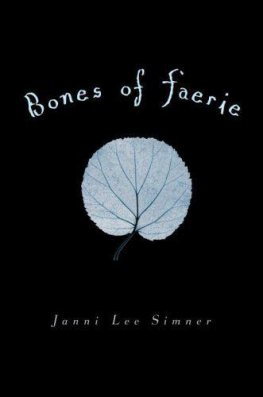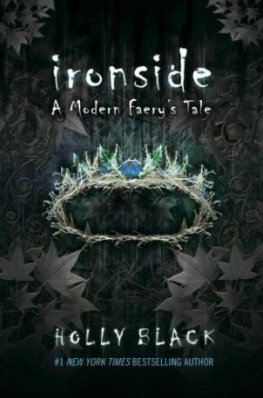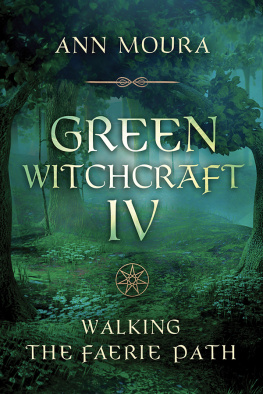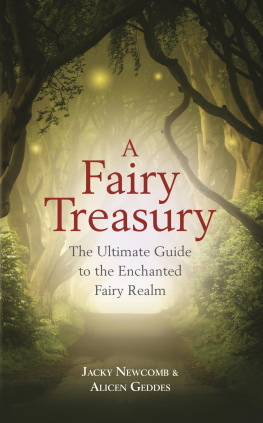ED ORG THE AUTHOR
I was born in 1955 just outside a small village in Shropshire, England. My childhood was spent exploring my rural surroundings the dappled woodlands, ruined barns, secret pools and disused railway lines a landscape of mystery and beauty, to those who are sensitive and who look hard enough.
In the 1960s I read a weekly educational magazine, Look and Learn, which covered all subjects including history, nature, science, art and even science-fiction stories. What made it stand out for me were the illustrations, as the very best British illustrators of the day were employed by the magazine Richard Hook, the Embleton brothers and Angus McBride among many. While at school I was made aware of the work of other artists, such as the sword and sorcery of Frank Frazetta and the otherworldly images of Roger Dean. The record covers of the 1970s also proved a rich source of visual imagery, such as Deans work for the rock band Yes.
In 1973 I started an Art Foundation course where I spent the first year floundering about totally directionless. The turnaround came from two main sources when I discovered a portfolio of Arthur Rackhams book illustrations and read JRR Tolkiens The Lord of the Rings. These influences finally showed me a direction. Five years later my final years BA show went up based on The Lord of the Rings. Since then I have always had a love of mythology.
All artists are influenced and nurtured by what has gone before. I like the idea of beauty for its own sake. Therefore, my lasting greatest influence is the Victorian artist Edward Burne-Jones. It was probably seeing his paintings reproduced as mezzotints and engravings that made me settle on the humble pencil as my preferred choice of medium. Over the years I have also come to admire the work of what is termed the Golden Age of Illustration. Artists working during this period include Arthur Rackham, Willy Pogany, Charles Robinson, Eleanor Fortescue-Brickdale and Edmund Dulac. In my case, all I can say is if you need an introduction to the realm of faerie, first look at the magic of the natural world all around you.
DRAW AND PAINT THE REALM OF FAERIE
This book is a celebration of the infinite world of faeries. In it, I have given you the tools with which you can create your own faerie art, as well as a wealth of imagery that can inspire and instruct your work. As I have already mentioned, I use the simple pencil extensively for me it captures the delicacy and subtlety of faerie folk beautifully therefore much of the instruction centres around pencil work. However, I do work in colour too, and I have provided core instruction for this medium too. I hope that you will derive as much enjoyment and fulfillment in creating imagery of the realm of faerie as I do.

THE ANGEL
Drawn in pen and ink from an initial vague thumbnail sketch, this picture evolved somewhat organically into the finished article. The pen-and-ink drawing was washed over with a predominantly warm palette of watercolours to create a rich, alluring image.
Pencil Work
Pencils are the tools of my trade. My love of this medium probably comes from my belief that the graphic force of black and white is more powerful than colour. You only have to look at black-and-white photography compared to colour to see what I mean. I also think that my muses appear more mysterious when rendered in pencil. They have a moody, pale and interesting quality that perfectly encapsulates the realm of faerie. In this section I will introduce you to the basic pencil materials I use to create my faerie art, and demonstrate the techniques you will need to create your own.

AMBUSH
The skirmishers await the oncoming soldiers. The inspiration for this picture came from watching the Sealed Knot re-enactment society in action. The detail of the tree and surrounding bracken lend a peaceful feel before the carnage of battle to come.
MATERIALS
The beauty of working in pencil is that the materials you need to complete your art are relatively minimal. Here, I introduce the basic range of pencils you will need to create faerie art, along with suggestions for papers and additional equipment.
PENCILS
These are the essential ingredients for capturing the delicacy of these ethereal worlds. The finest pencils I have settled on are the Derwent Graphic range, as I find these have a solid, break-free and impurity-free lead. I never use a propelling pencil as I find them too slippery. In the past I used a 6B pencil extensively to create dark, moody pieces but today I use a wider range of pencils, as listed below.

2B or 4B for sketching
5H for fine, linear areas or hatching/crosshatching flesh
5H, 2H and HB for finer detailed areas
6B and 9B for darker, richer areas
Sanguine pencil an orange/terracotta crayon pencil, useful for producing stand-alone head studies
KNIVES & SHARPENERS
Pencil sharpeners for two sizes of pencils are quick and easy to use, but craft knives and scalpels offer more control and create a longer point than a conventional sharpener. Turn to for a step-by-step demonstration of how to sharpen a pencil with a knife to achieve the finest point.



PAPERS
I use a wide range of papers, some tinted or textured, to create different effects. The paper I commonly use for detailed pencil drawings is Saunders Waterford hot-pressed (HP) watercolour paper which is 100 per cent cotton and acid free; Aquarelle Arches is another good 100 per cent cotton paper. The heavier and thicker the paper the better 300g/m2 (140lb) up to 638g/m2 (300lb) is ideal.



